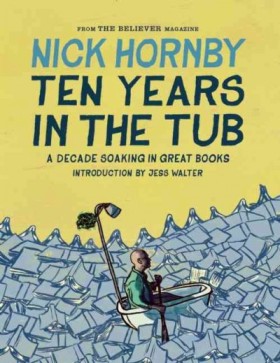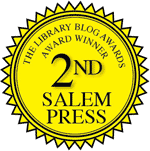 Frances Mayes nurtures a sense of home wherever she travels and writes, frequently envisioning herself buying the rented house and settling in even while just visiting. Literal homes seem to blend and expand with a myriad of temporary residences as she reflects upon flavors, tastes, scents, scenes, poetry, cultures, and histories. She and husband Ed explore a rich variety of exotic as well as ordinary destinations, sweeping a wide radius from their Tuscan epicenter through a European, Mediterranean, Asian, and African playground.
Frances Mayes nurtures a sense of home wherever she travels and writes, frequently envisioning herself buying the rented house and settling in even while just visiting. Literal homes seem to blend and expand with a myriad of temporary residences as she reflects upon flavors, tastes, scents, scenes, poetry, cultures, and histories. She and husband Ed explore a rich variety of exotic as well as ordinary destinations, sweeping a wide radius from their Tuscan epicenter through a European, Mediterranean, Asian, and African playground.
Everything I pick up seems to lure me away. … A desire to go runs through me equally with an intense desire to stay at home.
The memoir hints that this year’s travel in the world is a means for Frances and husband Ed to escape the dust and chaos of the ongoing contracted work at their perpetually-being-restored ancient Tuscan home named Bramasole. Or maybe it’s the growing sense of danger, with the possibility of random violence invading their domicile in northern California that pushes them away from home.
I didn’t know how deeply refreshing the landscape could be. The place does seem familiar, perhaps at a genetic level, but in a a nourishing way. Or maybe I’m just familiar with these friends, and when one is at home with friends, the surrounding world becomes friendly, too.
Whether traveling with newly made friends or rendezvousing with dear old friends, Mayes reflects on their friendships and fond memories, predicting potential relationships with new acquaintances or expressing relief that she won’t have to sit next to such boors as some of the cruise ship passengers at each meal. I found her most humorous when describing the absurdities of cruise ships and their tendency to transform passengers into cattle, driven through crowded tourist traps. Mayes’ first choice for travel is definitely not the cruise, preferring to rent homes and literally plant roots for a while in one village.
My early impressions of A Year in the World were tainted by my annoyance with what seemed constant obsession with food, especially meat and meat by-products, all forms of dairy and excessive indulgence in pastries on the part of Ed. I could assume he is quite rotund, despite his apparent energy and enthusiasm for daily excursions, even long strenuous walks in extreme heat such as their daily hikes to see the architectural and earthly wonders along Turkey’s Lycian coast. Could they possibly eat such meals while at home and shouldn’t they be more cautious with regard to health? My perspective did begin to soften once I reached the chapter on the British Isles—as they romped through English garden after English garden, I became so interested in garden tours. I love, and now wish to adopt, their habit of taking notes for use in the improvement of their home veggie, fruit, and flower growing techniques and varieties of plants. She describes serendipitous moments, such as finally coming across roses similar to a mystery species thriving in their Tuscany garden that was inherited after 30 years of neglect.
The book comprises about a dozen or so travel essays. Each may be dipped into separately or in sequence, yet it’s not the type of book you’ll read straight through. I started it months ago and picked the book up for just a chapter or two at a time, escaping to fascinating travel spots such as Andalucia, Scotland, and Mani. Mayes’ brief yet insightful reviews of books she travels with tempt me to add her inspired selections to my personal reading list. You may find it surprising that the title belies the format; you’ll seldom be aware of the month or year of her travels, and it’s never clear whether each of these trips occurred within a single year. That doesn’t matter, since you will be mesmerized by the poetic and lyrical way in which she transports you to a place and a moment, enveloping you in her experiences.
Check the WRL catalog for A Year in the World.
WRL also owns this title as an e-book.
Read Full Post »
 At first, it sounds like some sort of NPR show or something, but All Things Reconsidered is actually a delightful collection of essays that Roger Tory Peterson published in Bird Watcher’s Digest over the last decade and a bit of his life. Peterson’s name is a household word among birders, and his Field Guide to the Birds can be found all over the country, often in tattered, field-worn condition (my personal copy is taped together and dates from ornithology class at William and Mary ca. 1982).
At first, it sounds like some sort of NPR show or something, but All Things Reconsidered is actually a delightful collection of essays that Roger Tory Peterson published in Bird Watcher’s Digest over the last decade and a bit of his life. Peterson’s name is a household word among birders, and his Field Guide to the Birds can be found all over the country, often in tattered, field-worn condition (my personal copy is taped together and dates from ornithology class at William and Mary ca. 1982).














 Approximately five years ago, I read Jane Austen’s Pride and Prejudice as well as her other five novels after receiving an all-in-one collection as a gift. Having only truly read Pride and Prejudice once (I can’t count the Cliff Notes I used in high school), it’s a wonder that I am reviewing this festive micro-history which delightfully illustrates why Jane Austen’s perfect Regency romance has remained so untouchable since its publication in 1813, even as her style and subject matter are profusely imitated, now more than ever!
Approximately five years ago, I read Jane Austen’s Pride and Prejudice as well as her other five novels after receiving an all-in-one collection as a gift. Having only truly read Pride and Prejudice once (I can’t count the Cliff Notes I used in high school), it’s a wonder that I am reviewing this festive micro-history which delightfully illustrates why Jane Austen’s perfect Regency romance has remained so untouchable since its publication in 1813, even as her style and subject matter are profusely imitated, now more than ever!  The Art Detective Philip Mould became a television celebrity from his role appraising works of art unearthed from dusty attics or flea markets on the popular “Antiques Roadshow,” but according to his memoir he began as an ambitious art dealer who just happened to fall in love with the game of chasing down a good find using the forensic and research expertise of his reliable staff, his vast knowledge of artists and fine art portraiture and often pure instinct along with a willingness to risk his reputation in the highly competitive art world. Sheer luck seems to have been in his favor with a number of great finds that, had he been wrong — such as in his decision to scrape away some over-painting — might have had disastrous consequences both financial and for art’s sake. He seems very fortunate to have found early success that he has been rolling with ever since, which makes for a very fascinating read about his life’s work.
The Art Detective Philip Mould became a television celebrity from his role appraising works of art unearthed from dusty attics or flea markets on the popular “Antiques Roadshow,” but according to his memoir he began as an ambitious art dealer who just happened to fall in love with the game of chasing down a good find using the forensic and research expertise of his reliable staff, his vast knowledge of artists and fine art portraiture and often pure instinct along with a willingness to risk his reputation in the highly competitive art world. Sheer luck seems to have been in his favor with a number of great finds that, had he been wrong — such as in his decision to scrape away some over-painting — might have had disastrous consequences both financial and for art’s sake. He seems very fortunate to have found early success that he has been rolling with ever since, which makes for a very fascinating read about his life’s work.

